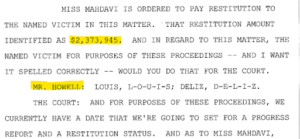Being in a car accident is stressful enough, but discovering that your vehicle has been declared a total loss can add even more frustration. Insurance companies often try to settle quickly, sometimes offering a lower valuation than what your car is truly worth. If you find yourself in this situation, knowing how to effectively negotiate the total loss value can help you get a fair payout.
Understanding the Total Loss Process
After an accident, your car may be towed to a storage yard where an insurance adjuster will inspect it. Once they assess the damage, the insurance company will decide if the car is a total loss, meaning the cost of repairs exceeds the vehicle’s market value. They will then present you with a valuation report listing comparable vehicles and an offer based on that assessment.
Review the Insurance Company’s Valuation
When you receive the valuation report, carefully review it. The report typically includes comparable vehicles from your area, adjusted for mileage, condition, and other factors. However, these reports are often generated by third-party software and may not fully account for the unique features or upgrades of your car.
Insurance companies may also pressure you to accept the offer quickly by setting short deadlines or discontinuing rental vehicle coverage within a few days. Don’t rush—take your time to evaluate the offer thoroughly.
Gather Your Own Evidence
To negotiate effectively, you need solid evidence that supports a higher valuation for your car. Consider the following steps:
- Check Comparable Listings: Look up similar vehicles in your area using Kelley Blue Book, Edmunds, Autotrader, or Craigslist. Make sure to compare vehicles of the same make, model, year, and mileage.
- Document Recent Repairs and Upgrades: If you recently installed new tires, tinted windows, replaced the transmission, or made any significant improvements, gather receipts as proof.
- Highlight Unique Features: If your car had premium features such as a sunroof, leather seats, or an upgraded sound system, make sure these are accounted for in the valuation.
- Get an Independent Appraisal: If you strongly believe your car is worth more, you can obtain an independent appraisal from a local dealership or mechanic.
Communicate Effectively with the Insurance Adjuster
Once you have gathered all necessary evidence, draft a clear and concise counteroffer. Here’s how you should structure your response:
- State Your Position Upfront: Begin by stating that the initial valuation is inaccurate and that your research supports a higher value.
- List Key Discrepancies: Highlight what the insurance company’s report missed, such as missing upgrades or incorrect comparables.
- Provide Supporting Documents: Attach your receipts, comparable listings, and any other relevant proof.
- Propose a Fair Counteroffer: Specify the amount you believe is fair based on your research.
Stay Professional and Persistent
Insurance adjusters deal with upset claimants every day, so yelling or arguing won’t get you far. Instead, remain professional and provide concrete evidence that justifies your request. If necessary, ask to speak with a supervisor or request an independent valuation review.
Final Thoughts
Negotiating your total loss settlement may take time and effort, but by staying informed and presenting a well-documented case, you increase your chances of receiving a fair payout. Remember, insurance companies are not always looking out for your best interest, so advocate for yourself and don’t settle for less than what your car is worth.



